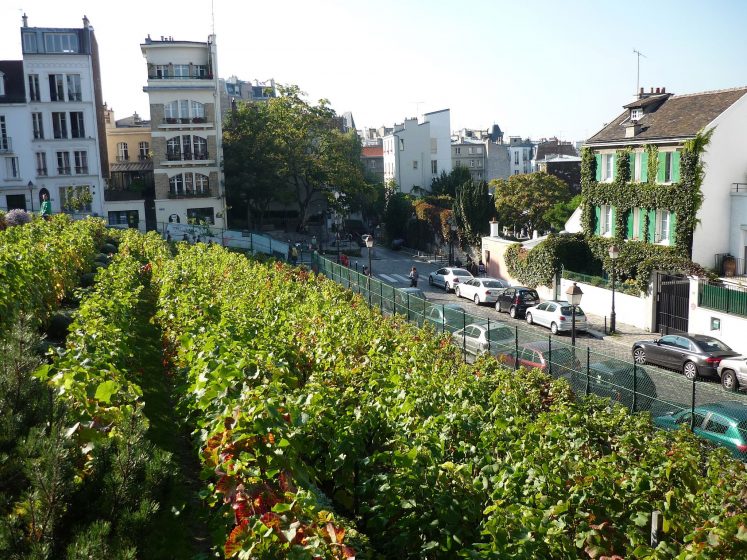8 Easy Facts About City Blooming Explained
8 Easy Facts About City Blooming Explained
Blog Article
City Blooming Fundamentals Explained
Table of ContentsThe 3-Minute Rule for City BloomingThe Only Guide to City BloomingA Biased View of City BloomingSome Known Incorrect Statements About City Blooming Rumored Buzz on City Blooming
Interested in expanding food up for sale in the City of Chicago? Thinking concerning starting a community yard? Modifications to the Chicago Zoning Regulation permit farming uses like area yards and urban ranches in numerous components of the city. Below is a listing of often asked questions pertaining to the regulations and laws that growers ought to think about when preparing an urban farming project.
The zoning modification does not change any various other codes taking care of composting, structure authorizations, purchasing or renting City possessed building, service licenses or environmental contamination. There are existing codes that control these concerns and they remain completely impact and might apply to your job. Area gardens are typically had or handled by public entities, public companies or community-based companies and kept by volunteers.
Urban farms grow food that is intended to be sold, either on a nonprofit or for-profit basis. Because of their industrial function, metropolitan ranches require a business permit. Yes. An area yard is permitted to market surplus create that was grown on website if the sales are accessory or subordinate to the garden's main purpose explained above.
The Facts About City Blooming Uncovered
Composting is enabled but just for plant product that is generated and used on site. The quantity of garden compost material can not exceed 25 cubic yards at any provided time according to the standards in 7-28-715 of the City's Municipal Code. Yes. Because the dirt at a lot of new yard sites needs modifying, garden compost, dirt, timber chips, or other products can be obtained to create or improve the expanding area - urban gardening.

If a structure permit is called for after that the hoophouse will be taken into consideration an accessory structure. You can find out even more about the building authorization requirements by contacting the Division of Structures. The 25,000-square-foot size limit is meant to avoid a solitary area yard from dominating an offered block or diminishing the block's existing property or commercial character.
The limitation does not apply to yards situated in Public Open Space (POS) areas. Can there be more than one area garden that is 25,000 square feet on a solitary block? Yes. The dimension restriction puts on private yards, not to individual blocks. No. Fence is not called for, however, gardens that have huge parking areas may be required to set up fencing or other landscaping features.
Get This Report about City Blooming
B1 & B2 areas call for that all commercial usage activities be conducted inside. Is secure fencing required for city ranches? Fences might be called for, along with landscape design and screening, for specific parking locations and outside job or storage locations depending on location and the specific task taking area.
Urban ranches need structure licenses and zoning authorizations prior to building and construction (garden care). Other types of city testimonial may be called for depending on particular structures, tasks, dimension, landscaping, licensing, public heath and stormwater management issues.
The Department of Business Matters and Consumer Security can aid determine the specific kind of service license that's needed. Off road car parking is required for the majority of industrial projects in Chicago. The called for number of vehicle parking areas is based on the number of employees functioning on website and not the square footage of the growing room.
Not known Facts About City Blooming

Yes. A metropolitan ranch can offer compost material produced on website, click for more nevertheless, the procedure should abide with the guidelines in 7-28-715 of the Chicago Municipal Code. Yes. Aquaponic systems are allowed inside your home on metropolitan ranches in lots of zoning districts. A zoning testimonial and structure permit is required in order to set up structures or systems and a company permit is needed as described over.
As much as 5 hives or nests of honey might be maintained as an accessory use. Beekeepers have to register with the Illinois Division of Farming. To learn more about the recommended zoning change you may get in touch with the Department of Real Estate and Economic Development, Bureau of Preparation and Zoning at 312.744.8563.
, which takes area in rural locations at the edge of residential areas.
What Does City Blooming Do?
It can include a motion of organic cultivators, "foodies" and "locavores", who look for to develop social media networks established on a common ethos of nature and community holism. These networks can create using official institutional assistance, coming to be incorporated into neighborhood community planning as a "transition community" activity for lasting city advancement.
The much more direct accessibility to fresh vegetable, fruit, and meat products that may be know with urban agriculture can boost food safety and security and food safety while decreasing food miles, resulting in reduced greenhouse gas exhausts, consequently adding to environment modification mitigation. Some of the very first evidence of urban agriculture originates from Mesopotamia.
Report this page